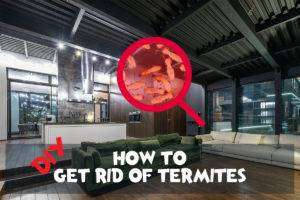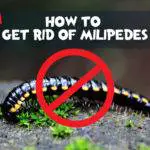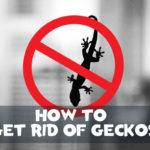Subterranean termite is probably the most expensive pest to deal with from a homeowner’s perspective. In this guide, I’ll teach you how to effectively get rid of termites.
To get rid of termites, treat the mud trails and infested wood with termiticide, followed by the soil around external building perimeters. Use only non-repellent products labeled for termites. Home remedy is a strict no for termite treatment! Consider installing bait stations around your house to detect and eliminate termites.
Let’s drill in further for more details.
Can I DIY Termite Treatment?
Yes, you can DIY termite treatment if you spend some time studying how to do it. And that’s the exact purpose of this article. However, you might want to engage a local service provider for certain treatments, due to the cost of the tools and labor intensiveness.
Treatments that you can DIY are perimeter trenching, baiting, and spot treatment. For underground termite-proofing, I recommend you hire a professional to do it. You can get termite control quotes from your local service providers on Networx.
Termite Castes
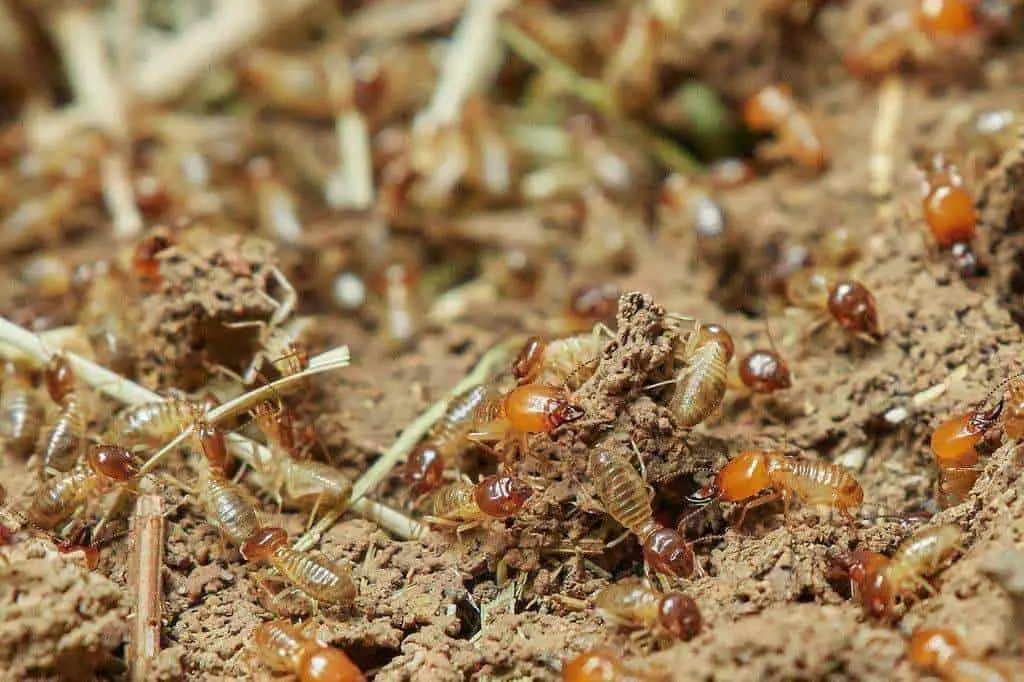
To effectively get rid of subterranean termites, you must first understand their caste. It is the caste system that makes termites difficult to eliminate.
Termites are eusocial insects, much like bees and ants. In a termite colony, there are different castes, each caste has their own roles to play. In general, there are reproductives, workers, and soldiers in a termite colony.
Reproductive Caste
Reproductives are the termites that can reproduce. Each termite colony has a queen termite. She controls the whole termite colony through her pheromones, and her main duty is to lay eggs. A queen termite can lay several hundreds of eggs depending on species.
Besides the queen termite, there is another reproductive caste known as the alates. Alates are termite with wings. A mature colony will have thousands of alates that fly out on the same night to mate and form new colonies.
Worker Caste
Majority of the termites in a colony are the workers. They can’t reproduce, and their main tasks are to forage for food, take care of the queen, maintain the nest etc. Workers are the ones causing damage to wood.
Soldier Caste
Soldiers are termites with bigger head capsules and mandibles. They are generally bigger than workers, which is sensible since their job is to defend the colony. They readily bite intruders with their powerful jaws.
Soldier termites do not damage wood. Their jaws are too big for them to bite off the wood. Instead, they rely on the workers to feed them. This is an important note for those who plan to DIY termite baiting.
What are the Types of Termites
Termite treatment varies according to the type of termites you face. Hence, it is important to know what sort of termites you are facing.
Subterranean Termites
Subterranean termites are termites that dwell underground. Most of the damages in buildings are caused by subterranean termites.
Subterranean termites forage above ground by building mud tubes, where they travel within. Most subterranean termites require high moisture to survive. Mud tubes protect them from desiccation.
Subterranean termites can also build nests in high-rise buildings. They still need soil, and those aerial nests connect to soil via mud tubes.
Here are the notable subterranean termites in the US:
Formosan Subterranean Termites
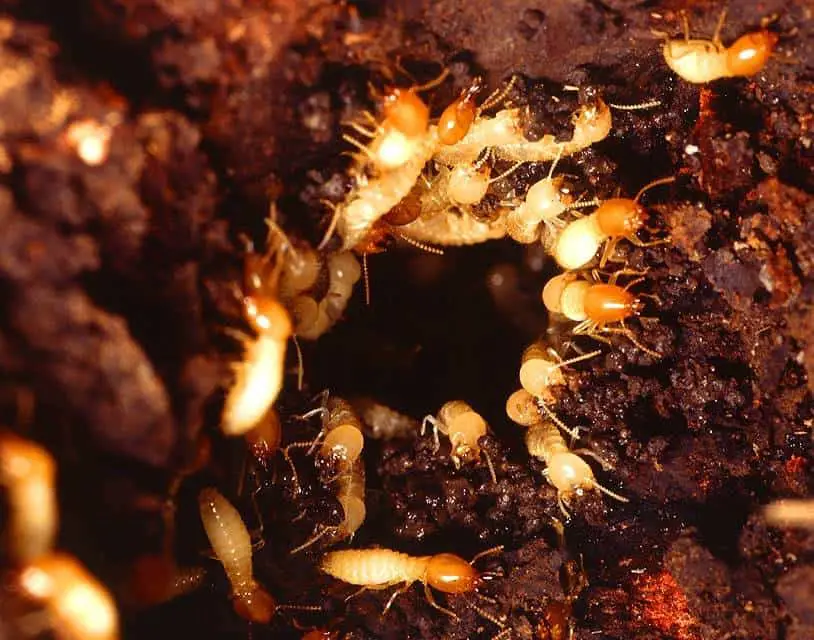
Coptotermes formosanus is the probably most destructive termite. Compared to other termite species, it can form a huge colony consisting of the main nest and multiple satellite nests.
A Formosan termite colony can grow 10 times bigger than a typical subterranean termite colony. Because of that, they can eat more wood per day, causing extensive damage to the building.
Formosan twenties are highly adaptive. They can source water from leaking pipes and air-conditioner condensation, without the need to obtain water from ground sources.
Luckily, Formosan termites are found only in the southern region of the United States.
If you are keen to understand more on the biology of Formosan subterranean termites, check out this Wiki.
Native Subterranean Termites
Reticulitermes flavipes, R. hesperus, R. virginicus, and R. hageni are the subterranean termites native to North America. They are commonly found in warmer regions.
Unlike Formosan termites, the native subterranean termites are highly dependent on moisture from the ground. As a result, they seldom infest higher levels in buildings.
Drywood Termites
Drywood termites are commonly found in finished furniture and wooden structures. They can survive by utilizing the water available in the wood, without sourcing for water.
Drywood termite infestations are contained in the furniture or wood structure itself. They cannot spread to nearby furniture, unless they are made of unfinished wood.
Unlike subterranean termites, drywood termites don’t have worker caste.
Dampwood Termites
Dampwood termites are of the least concern because they usually infest rotten trees and not human property. As the name implies, they require high humidity.
How to Identify Termites?
Termites are often confused as ants, especially carpenter ants since both live in woods. I’ve seen some posts where people mistaken termites as ants, particularly those termites that can travel above the ground without mud tubes.
You can identify them by looking at the 3 characteristics outlined in the table below. If you have an ant issue, refer to this guide instead.
| Characteristics | Termites | Ants |
| Antenna | Straight antennae | Elbowed antennae |
| Wing | Front and hind wings of equal size | Front wings longer than hind wings |
| Waist | No waist. Abdomen as broad as thorax | Narrow waist between thorax and abdomen |
How to Identify a Termite Infestation?
Termites infestations are usually noticed when they have caused considerable damage. Here’re some clues to help you identify termite infestations.
Mud Tubes
Subterranean termites build mud tubes and travel within them so that they are protected from desiccation. If you see mud tubes on walls, ceiling, etc., you have a subterranean termites infestation. Don’t scrub them off, until the infestation is resolved.
Hollow Woods with Soil
Termites eat wood, leaving the wood hollow within, but seemingly intact from outside. Unlike carpenter ant infestation, the wood galleries contain soil and feces of termites.
Knocking Sound from Woods
If you knock on an infested wood, you will hear a termite knocking sound. What happened is, the soldier termite sensed vibration from knocking. In return, they use their head to tap on the surface as a warning to their nest mates on potential threats.
Powders under Wooden Furniture
If you see fine powders underneath wooden furniture, it could be drywood termites. A drywood termite colony lives its entire life in the wood. They create a kick hole on the wood, which is used to push out their feces.
Alates Emerged from Wooden Structures
If you are lucky (or unlucky), you may see winged alates swarming out from your furniture or other wooden structures. This indicates there is a colony inside the wood.
Things Not to Do when You Spot a Termite Infestation at Home

When you see signs of termite infestation, don’t panic and spray them with anything you have. Calm down. Get the right termiticide. It’s not like they can eat a few pounds of wood while you are buying the right termiticide.
Never treat termites with fast acting insecticides, such as mosquito or cockroach spray! Fast acting insecticides cannot be transferred across the colony because the treated termites are killed immediately. Treating foraging termites with fast acting insecticides has no impact on the colony.
Never use any home remedies to kill termites. At best, those home remedies kill termites like fast-acting insecticides. But they do not address the termite colony!
Be careful not to kill any termites when you are doing any treatment. Termites are necrophobic. They can quickly abandon the areas with dead nest mates. This means they will go to the other side of your house, which is not visible to you.
How to Kill Termites?
Substances used to kill termites are known as termiticides. They often come in liquid, foam, dust or bait.
You can kill termites by injecting termiticide foam or dust into mud tubes and the wood galleries. Meanwhile, treat the soil around building perimeters to kill termites exiting your house. It takes 2-3 months to suppress the colony. I highly recommend baiting, because it can achieve colony elimination.
It is easy to kill termites, but not easy to eliminate the colony. If a treatment kills only the foraging termites, it has a negligible impact on the colony, given the queen constantly lays eggs. Hence, it is crucial to use the right product for termite treatment!
How Termiticide Works on Termites?
Majority of termiticide formulations (except bait) target the nervous system of termites. They are slow-acting, so that the termites don’t die on the spot.
Termites contracted the termiticides will transfer the termiticides to their nest mates through grooming. At the same time, more workers will continue utilizing the treated area and pick up the termiticide, since they can’t detect it.
As a result, a significant portion of the colony is killed, and the termite colony is suppressed.
If the treatment is done correctly, you should continue to see the termites around. If they die immediately after the treatment, or abandon the mud tubes or wood galleries, you’ve done it wrong! Please get help from your local termite control service provider. You can get non-obligatory quotes on Networx.
Treat the Visible Termites
Actively foraging termites and termites in wood galleries can be treated by termiticide foam or dust.
First, poke small holes on the mud tubes. Be careful not to injure any termites. Puff in termiticide dust according to the manufacturer’s instructions. Don’t use foam because the pressure from the canister is too high, and it will break the mud tubes. Liquid, on the other hand, can’t spread through the mud tube.
To treat infested wood or wall voids, drill holes at 3-4″ intervals on infested woods until you find the hollow spots. Those are the galleries formed by termites. Inject either foam or dust into the hollow wood. If you are using foam, inject until the foam overflows. That’s a sign that the foam has filled up all reachable cavities.
Treat as many infested spots as possible. This step is usually sufficient to eliminate drywood termites, because they are contained within the wood, but not subterranean termites – which requires additional measures as outlined in the next section.
For dust, I recommend using either Taurus Dry or Termidor Dry. Both are similar, but Taurus is more economical, except it may not be registered in your state yet. You need to use the included pump for precise application. If too much dust is applied (using a third party or DIY pump), the termites will die too soon before they can contaminate other colony members through grooming.
For foam, you can use Alpine Ant & Termite Foam or Termidor Foam. Both have different modes of action, but they work equally well for subterranean and drywood termites.
Make sure you wear gloves when handling termites and termiticides. The termite soldiers bite, and a pair of nitrile gloves can protect you to a certain extent.
Trench the Perimeter
If you are facing a subterranean termites issue, you need to treat the building perimeters. This will increase the success rate of the treatment, because there might be termites eating wood at hidden places that you can’t treat.
Dig a trench around your building perimeter. It should be at least 6” wide and 6” deep. Drench the trench with termiticide according to label rate. Treat the soil before backfilling. If the external perimeter is paved with tiles or concrete, you will have to drill holes and inject the termiticides through rodding.
Repeat the same for crawl space. Trench around the foundation wall, support beams and connecting pipes. If the crawl space is inaccessible, you will need to drill through the foundation walls to apply the termiticide.
You need to treat your basement too. Drill holes around the perimeter of the basement. Inject termiticide into the holes. The distance between holes is specified in the label of the product you use.
I recommend using either Taurus or Termidor for trenching. Both products contain fipronil, and they are non-repellent. Fipronil binds strongly to soil, and field trials by USDA show that it can provide protection for 10 years (mainly because the trial was concluded by then). Lastly, they are safe to use (if you follow the label instructions), and have minimal impact on earthworms, soil microbes, and plants.
Termite Baiting System
Baiting is the most reliable way to get rid of subterranean termite infestation. It allows a targeted termite colony elimination, or at least, suppression. The caveat is, it works only for certain species of subterranean termites. But the good news is, those are the most commonly encountered termites at homes!
My personal favorite is above ground bait stations. It can be installed at termite’s foraging spot without drilling. You don’t have to do labor-intensive drenching and rodding too. Moreover, baiting alone is sufficient to eliminate a subterranean termite colony.
Unfortunately, none of the above-ground termite baits are available for homeowners. The manufacturers require applicators to be trained and certified before using their products, as part of their branding strategy, and ensuring the treatment is successful.
The only options you have for DIY termite baiting is the in-ground bait system. In short, in-ground termite bait stations are installed around your building. When the invading termites hit the baits, their colony will be eliminated.
You should definitely consider installing in-ground stations if you are located in California, Florida, Mississippi, Alabama, Louisiana, or Texas where subterranean termites are more active.
I recommend using Trelona Compressed Termite bait for your DIY termite baiting project. It is highly effective against subterranean termites, and it is available for homeowners.
I have written an article on how to DIY termite baiting, if you want to learn more about it.
How to Prevent Termite?
There is no way to prevent termites unless you have zero wood in your house. You can only reduce the risk of termite infestation via a combination of different methods.
The best time to implement a termite prevention program is before building houses. Nowadays, many construction works implement some level of termite prevention programs, especially in those states with higher risk of termite activities. This includes installing termite-proof mesh, termiticide impregnated sheets, and treating the soil underneath the concrete slab with long-lasting termiticide.
If no termite prevention program is implemented in your house before it was built, you can still do post-construction corrective soil treatment. I don’t recommend you DIY this though, due to the complexity of the job and labor-intensiveness. You can find a local service provider to help you with termite prevention on Networx.
Click here to learn more about different methods of termite proofing.
Does Wood Treatment Prevent Termites?
Wood treatment can prevent termite from attacking the particular treated wood only. However, it doesn’t stop termites from attacking other wood in your house.
I recommend using Bora-Care because it penetrates deeply into woods, providing long-lasting protection. Bora-Care contains disodium octaborate tetrahydrate, which is relatively safe for humans and pets. No retreatment is required.
Spray your unfinished furniture, and beams in crawl space and roof void with Bora-Care. The chemical will be absorbed into the wood, and kill any termites (and carpenter ants, wood borers) that try to damage the wood. It also prevents damage by fungi.
Final Words
Remember, termite control is not about killing termites on the spot! If you want to get rid of termites, you need to eliminate, or at least suppress the termite colony.
I hope you find this guide helpful, and thank you for reading. Do share my blog if it helps you.

